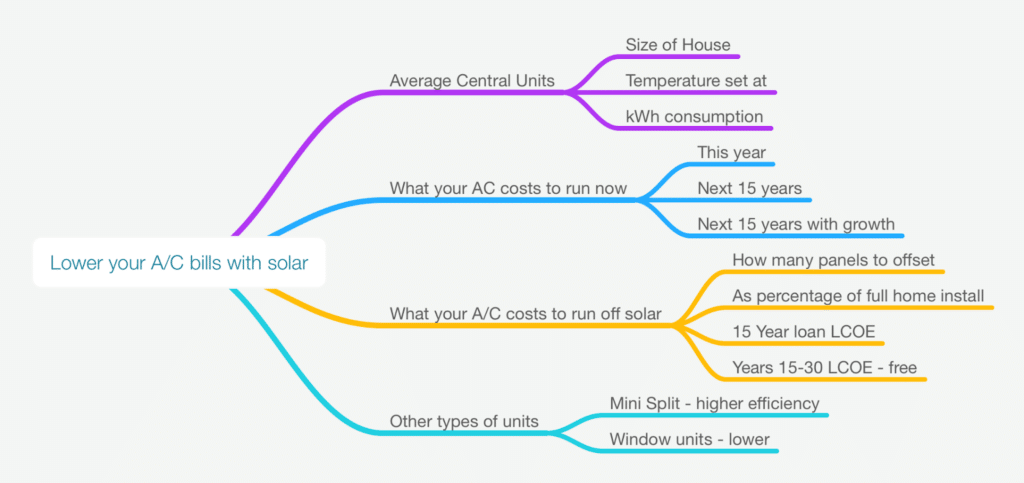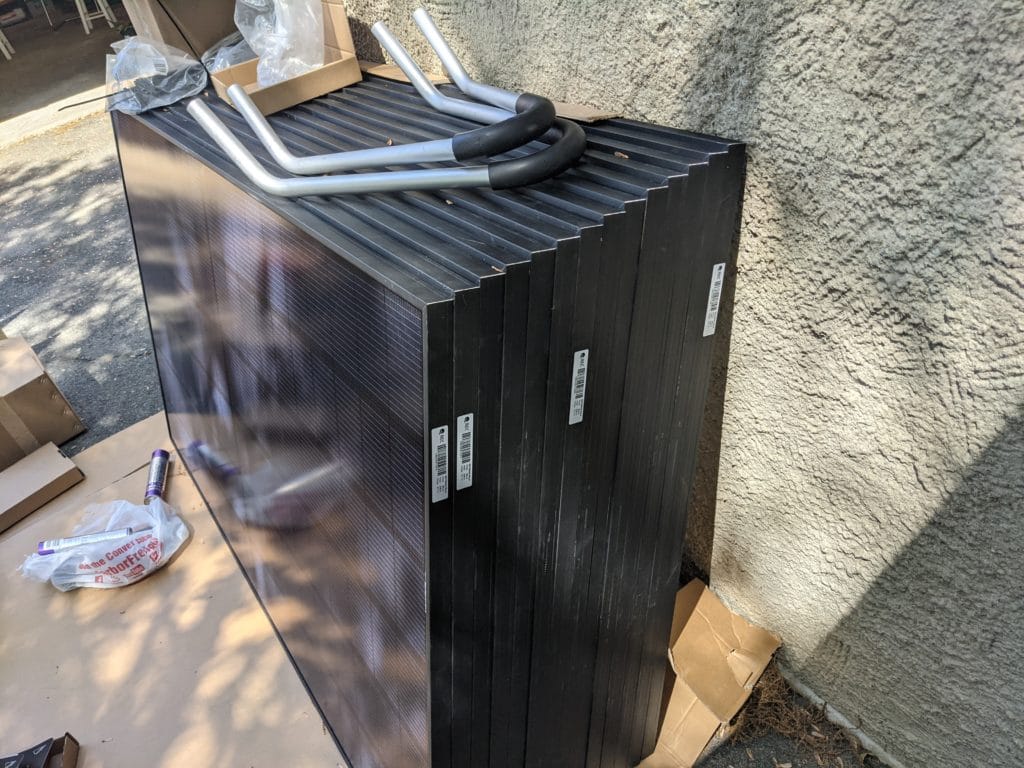
Solar and A/C units seem to go hand in hand don’t they? Your air conditioning runs on electricity. Solar panels generate electricity. Your air conditioner runs more during the long summer days, and so do your solar panels!
Since home energy bills are often 70%+ composed of heating and cooling requirements, it makes great sense to compare these costs to a potential solar project. In this article, we’ll focus on cooling via a standard air conditioning unit- but later – we’ll talk about heat pumps, because they’re important.
First question though is, how much money does it cost to run our air conditioner? A few variables feed this equation – the size of the house, the temperature those in the house like it at, and – drumroll – how much the electricity costs to cool that house.

A good rule of thumb for roughly calculating cooling a house is 0.75kWh per square foot per month. Then you modify that rule of thumb up or down depending on whether you keep the temperature above or below 68 degrees. As well, there are modifiers like how much insulation you have, and whether or not you’ve got tree shade. For example, my 2.5tons of A/C cooling 1,400 square foot takes about 1000kWh per month to cool my living room to 70deg during the day and my bedrooms at 66deg.
If you didn’t want to “rule of thumb” things because you’re a bit more detail oriented type person, Whaling City Solar will help you scientifically determine what your AC is using. We can do this two ways:
- We work with you to collect data on your AC. Specifically, how many units you have, how much electricity the units draws, whether that draw is variable, and how many hours a day the units run. We then put that into a spreadsheet, and get a 95% accurate value (as long as you’re honest about the number of hours your system runs).
- We install hardware between your air conditioner and the house’s electricity panel. This let’s us exactly now how many kWh’s your system pulls. This technique takes more time, is a bit more intrusive – but – it gets you solid answers.
After you figure out roughly how many kilowatt hours you might be using, you then multiply that by the Massachusetts standard electricity rate of – $0.22/kWh. For my house, that’s about $220/month in air conditioning on our hottest months.
We’ve already written about how we jump back and forth from kWh (the power itself) to kW (the capacity of the solar panels to generate power).

Before we start designing the solar, I always recommend homeowners to first audit their own habits for reducing consumption in the summer:
- Set your thermostat back. The Department of Energy estimates savings of as much as 10% a year by setting your thermostat 7-10 degrees for 8 hours a day, like when you’re not home.
- Cover your windows. Per the DoE, 76% of the sunlight that hits standard double-pane windows becomes heat. Cover your windows during sunny periods and prevent much of that heat from entering.
- Turn on the fan. Turning on a fan instead of the AC can “spot cool” the room you’re in, without the high energy cost. And turning the fan on in addition to the AC can allow you to raise your thermostat by 4 degrees with no change in comfort.
If we’re done with the energy improvements, we now have a good target of solar generation number.

The payback on your AC focused solar power system will be the same as any other solar power system in the Massachusetts SMART program. With caveats such as whether you buy a premium or standard solar panels, or other variables, your system will roughly pay for itself between 5 to 7 years.
This payback is based upon Whaling City Solar’s SeeThru Pricing.
For example, a new A/C system the size of mine – needing 6,000 kWh/year – would require 5.0 kW of solar – which is about 13 solar panels. Roughly, if this is a standard system with no complexities – the solar project will cost around $7,500 after incentives and save $1,500/year in Eversource bills.
Pretty *cool* that you can power the cooling of your house with some squares on your roof – and that in about five year’s that cooling will be essentially free for the next 20 years!

